Paul
GARBER (August 31, 1889 - September 23, 1992) |
|
| Wokipi-Kite | |
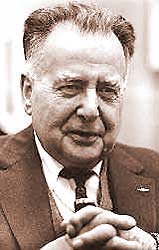 |
Paul
Garber saw the entire history of aviation evolved during his
own lifetime: a pioneer kitemaker (and inventor of the telephone)
Alexander Graham Bell, a neighbour, helped him bridle his kite. At the age of nine, he witnessed one of the early flights of the Wright Brothers. At the age of 15, Garber built a full-scale biplane glider based on a model he had seen at the Smithsonian. His mother helped him cover the wings with red chintz, after which a group of friends towed him into the air with a clothesline. |
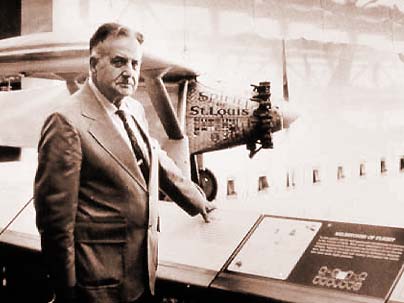 |
| Paul
Garber joined the Army in 1918, and was about to begin flight
training at College Park, Maryland, when
the war ended. Though he did learn to fly, he was not one of the regular
pilots but more of a ground crewman and messenger during his short
career with the Postal Air Mail Service
after the Army. But Garber, a talented craftsman and model maker who frequented Smithsonian museums, decided that he could best contribute to the future of aviation by preserving its past. In 1920, he began working at the Institution, building models and preparing exhibitions. Garber was interested in kites and was the author of a book on the subject for the Boy Scouts in the 1930s. |
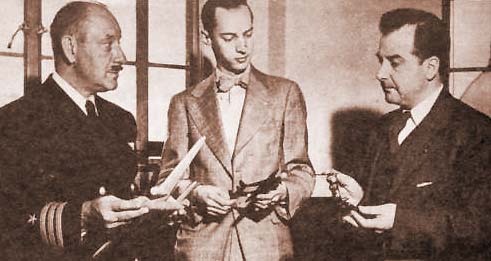 |
In 1942,
Commander Paul Garber, is called to serve in the US Navy. While he
is aboard the "Black Island" battleship, he realizes
that the marine's gunmen do not have good shooting training. One day he made a kite and challenged a gun crew to use it as a target. This was more realistic than using clouds as targets as had previously been done. To the crew's exasperation, they had to fire many rounds before making a direct hit. The captain of the ship was so impressed with the demonstration that he ordered Paul to build more target kites. Navy Commander Louis de Florez of U.S. Navy Special Devices Division (left) with Paul Garber (right). |
| IHe begins with a Eddy kite, which he equips with a double reel (two lines), a control bar, and a brake. To refine simulation, the silhouette of a Japanese Zero airplane is painted on a blue background. At 180 meters, it resembles a true enemy plane which would be at a distance of 400 meters, their travel rate being identical. The Navy Target Kite (NTK) was born. Over 350,000 of them were made, and Garber spent most of the war on that assignment |
| He
is a men with a short, courtly, pear-shaped man with bristling eyebrows,
piercing look and booming voice. He was famous for, among other things,
his encyclopedic knowledge of kites. A spellbinding public speaker
who could get listeners to stand on their chairs and applaud with
fervour During 72 years he dedicated himself to the preservation of the nation's aeronautical heritage and to sharing his boundless enthusiasm for flight with Smithsonian visitors. He played a key role in the creation of the National Air Museum in 1946. His powers of persuasion were legendary. Army engineers at nearby Fort Belvoir provided a bulldozer to clear trees and brush from the site. Garber persuaded a local contractor to donate any excess cement remaining aboard his trucks at the end of the workday. Navy officials agreed to provide, at cost, the first of the prefabricated buildings that would soon dot the site.. (right). With his wife Buttons, who devotedly sewed the kites Paul designed, Garber organized the Smithsonian's annual kite festival in the late 1960s and the event was such a success it continues two-and-a-half decades later. |
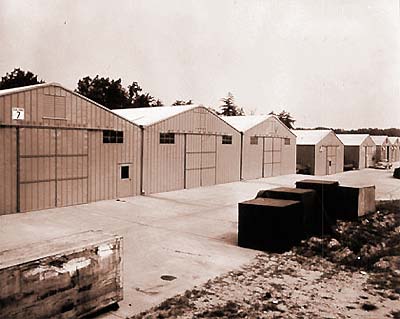 |
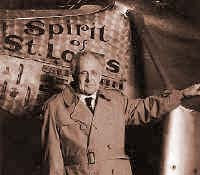 |
He was
indispensable in the effort to construct the present National
Air and Space Museum building, which opened in 1976. Most
important, Garber, as first curator and devotee, helped to assemble
the most impressive collection of historic aircraft
in the world for the Institution. 1980 To alleviate overcrowding at the Paul E. Garber Preservation, Restoration and Storage Facility and to provide space for new acquisitions, the Smithsonian's Board of Regents proposes that the National Air and Space Museum establish a second facility near a major airport in the Washington, D.C., area. . 1990 The Smithsonian's Board of Regents reaffirms its preference for Washington Dulles International Airport as the site for the museum's companion facility (January 29). |
| Paul
Garber, age 93, who passed away in his sleep September 23, 1992
after being hospitalized. He lies in Arlington National Cemetery. 1993 President Bill Clinton signs legislation establishing an extension for the museum at Washington Dulles International Airport in Virginia (August 2). |
|